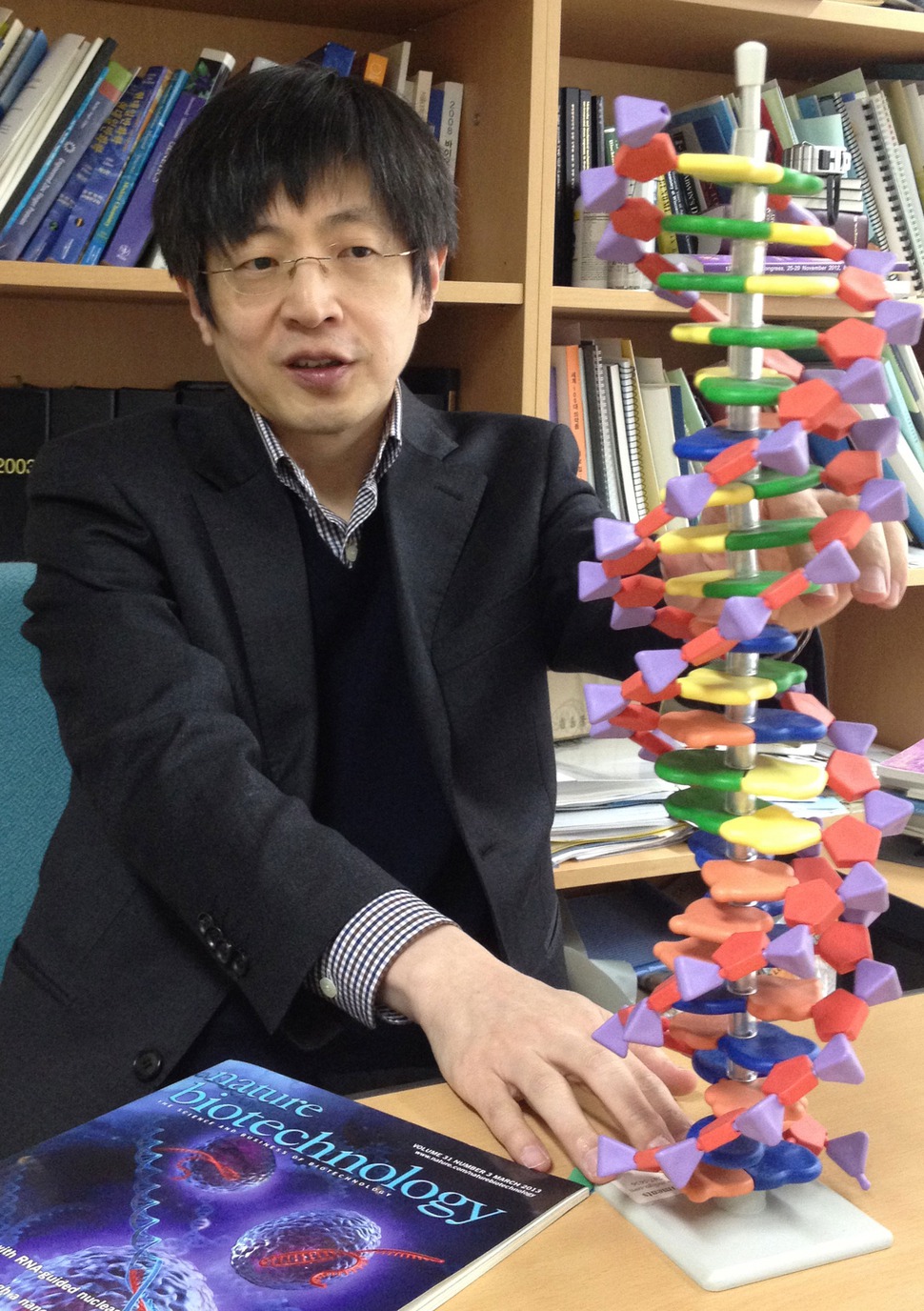 |
|
Kim Jin-soo, former professor at Seoul National University (Hankyoreh archives)
|
Kim Jin-soo falsified reports regarding technology developed through public funding
Conclusive evidence has emerged showing former Seoul National University (SNU) professor Kim Jin-soo to have submitted false information on a 2012 employee invention report to the university’s R&DB Foundation on technology he is now accused of diverting to his own company. The technology in question, which has an estimated value in the hundreds of millions of dollars, was developed with taxpayer money. According to National Research Foundation of Korea (NRF) materials acquired by the Hankyoreh on Sept. 10 from the office of Democratic Party lawmaker Park Yong-jin, Kim listed the publication of a key paper on the CRISPR/Cas9 genome editing technology as a product of NRF research support in a report to the foundation. While Kim has previously disputed accusations by arguing that development of the CRISPR technology had “nothing to do with research support from NRF,” his own report to the foundation shows his claims to be false. To date, Kim has falsely claimed in reports to SNU and elsewhere that the genetic scissors technology development was paid for by his own company ToolGen. Received US$2.6 mln in NRF support for research Between 2010 and 2014, Kim received 2.936 billion won (US$2.6 million) in support from NRF as part of its “original research support” effort. The money in question came ultimately from taxpayers. The research project title was “genome resequencing through genetic scissors technology”; Kim’s then-employer SNU was listed as the presiding research organization, with no separate cooperating research institutions listed. In a report to NRF, Kim listed the Mar. 2013 publication of a paper on the CRISPR technology in the international journal “Nature Biotechnology” as a result of the project. (Titled “Targeted genome engineering in human cells with the Cas9 RNA-guided endonuclease,” the paper was first made available online on January 29, 2013.) He also reported that NRF support accounted for a 70 percent contribution to the paper’s writing – essentially admitting that state money via NRF was crucial in developing technology the technology described in the paper. “Dr. Kim and his team registered this themselves in the foundation’s support outcome system,” an NRF official said. The Mar. 2013 paper was the first published by Kim’s team on the CRISPR technology and is seen as one of his leading publications. Multiple sources familiar with Kim’s paper and related patents told the Hankyoreh that ToolGen’s key patent (61/717,324) was “identical” to the technology described in the Mar. 2013 paper. This suggests that a research achievement Kim himself described as having been developed through state funding became the property of a company – ToolGen – where he is majority shareholder. But as an employee invention receiving state R&D support, the related patents should be the property of the SNU R&DB Foundation, the related specialized organization for his employers at the time.
 |
|
The outlines for technology developed by Kim and his team with funding from the NRF (left) is identical to that of the technology for which ToolGen, a company in which he is majority shareholder, applied for an exclusive patent.
|







